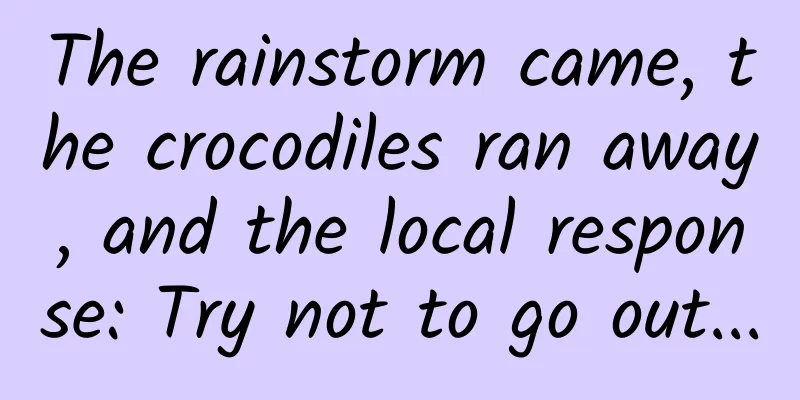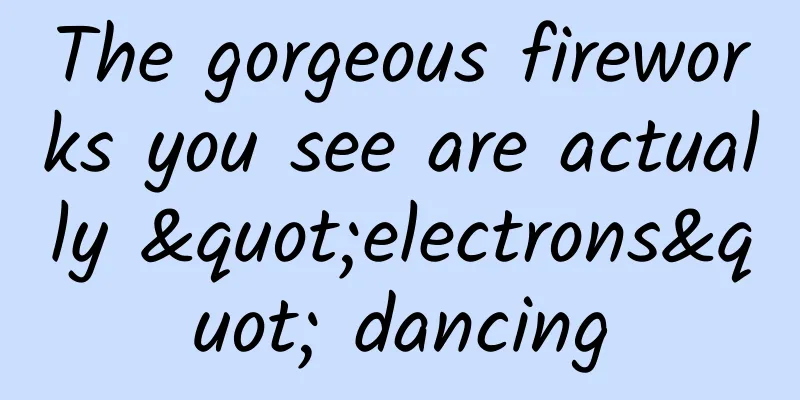Why does the "oil stains" come out of the freshly washed cup as soon as hot water is poured into it?

|
When you come to a restaurant to dine, the waiter enthusiastically hands you a cup of hot tea. You glance into the cup inadvertently and find that there is "oil stains" floating in the cup! Are the interlaced water shadows in the teacup oil stains? Source: Photo by the author So, you secretly regretted choosing a "dirty" restaurant, silently poured out the tea and replaced it with a cup of hot water, and the "oil stain" seemed to have really been poured out and disappeared. But are the interlaced water shadows in the cup really oil stains? 01Interlaced water shadows In fact, the interlaced water shadows we can see are based on the same principle as our ability to see oil stains in water, both due to differences in the refractive index of the liquid. Clear oil-water boundary Source: Photo Network However, there is only hot water in the cup, so why is there a difference in refractive index? Could it be that the interlaced water shadows have the property of "disliking cold and liking heat"? Let's test it. We use an Abbe refractometer, which can measure the refractive index of liquids based on the principle of total reflection of light. At the same time, we use a constant temperature water bathtub to measure the refractive index of deionized water at different temperatures: Changes in the refractive index of deionized water with temperature Source: References The experimental results show that the refractive index of liquid (deionized water) decreases as the temperature increases. It turns out that after the hot water enters the cup, part of the hot water that contacts the relatively cold bottom and wall of the cup is cooled, and forms local convection with the surrounding still hot water. The refractive index of these areas with convection and significant changes in water temperature changes significantly , which makes us feel as if there are two different liquids flowing and see interlaced shadows. Convection diagram source: author's own Similarly, pouring cold water into a hot cup will also produce a similar phenomenon. The key lies in the temperature difference between the cup and the poured liquid. 02 Mirage It is not uncommon to see strange light phenomena caused by changes in refractive index due to differences in certain physical properties. Mirage is a typical example, and the root cause is the difference in air density. Mirages are divided into superior mirages and inferior mirages. Superior mirages usually appear at sea because the air density in the lower layer is greater than that in the upper layer, and the refractive index of the air gradually decreases from bottom to top. At this time, the trajectory of the light reflected by the object in the air is an upward convex parabola, and the image of the object is above the original object, which can be upright or inverted. A mirage appeared on the sea surface of Dapeng Bay, Shenzhen in July 2021. Source: Shenzhen Evening News The inferior mirage usually appears in hot and dry deserts, where the air density in the lower layer is lower than that in the upper layer, and the refractive index of the air increases gradually from bottom to top. At this time, the trajectory of the light reflected by the object in the air is a parabola that is concave upward, and the image of the object is below the original object and is inverted. Mirage phenomenon in the Sahara Desert Source: Meipian What is the relationship between the well-known physical quantity "density" and the refractive index? By measuring the refractive index of sucrose solutions of different concentrations, we can find that the sucrose solution with a higher density has a higher refractive index, while the sucrose solution with a lower density has a lower refractive index. The refractive index of sucrose solution changes with sucrose concentration. Source: References Using this conclusion, we can simulate the mirage phenomenon: pour half of a liquid with a higher density (such as saturated sugar water, saturated salt water) into a glass jar, use a transparent film to pour a liquid with a lower density (such as pure water) on top, carefully remove the transparent film, and use a laser pen to illuminate the water from the side. You will observe that the laser light path is convex upward. After placing a burning candle in the glass jar, you can observe a mirage. Image source: bilibili@HuoSpark Academy As the denser solution becomes diluted, its refractive index gradient decreases, the degree of light bending also decreases, and the mirage disappears. 03 Magical left-handed material So why does light refract? This question was answered as early as 1662 by French scientist Pierre de Fermat: the path of light propagation is the path where the optical path takes an extreme value, which is the famous Fermat principle. Fermat image source: Baidu Encyclopedia What is the " path with the extreme value of the optical path "? In layman's terms, it is the path that light takes between two media . Although it is not a straight line and not the shortest distance, it is the path that takes the shortest time . Refraction light path diagram Source: Author's own 41 years ago, Dutch mathematician Snell discovered through calculation that when light is incident from the first medium (refractive index n1) into the second medium (refractive index n2), it will be refracted on the smooth interface, and the incident angle θ1 and the refraction angle θ2 satisfy: We learned in junior high school that chopsticks "bend" in water due to the refraction of light (as shown in the left picture below), but is it possible for us to observe the phenomenon shown on the right? The chopsticks are "bent" Source: Made by the author Inspired by the bizarre nature, scientists have designed and synthesized materials with special structures, making the optical phenomenon of "reverse bending" of chopsticks in the right picture possible, and called it "negative refraction". By making good use of negative refraction, many fantasy stories will become possible. We know that light is actually an electromagnetic wave. In electromagnetism, the electric field intensity E, magnetic field intensity H and propagation direction k of electromagnetic waves satisfy the right-hand rule: point the four fingers of your right hand in the direction of the electric field intensity E, then bend the four fingers so that they turn to the direction of the magnetic field intensity H at an angle less than 180°. At this time, the direction of the thumb is the propagation direction k of the electromagnetic wave. Light satisfies the right-hand rule in most natural propagation media, and these media are called "right-hand materials." The relationship between the electric field, magnetic field and propagation direction of electromagnetic waves Source: sohu.com In 1968, Soviet physicist Veselago conceived a special medium (material) that allows electromagnetic waves to propagate according to the left-hand rule. He called this material "left-handed material." Soviet physicist Victor Georgievich Veselago Source: Wikipedia From the perspective of light propagation, the refractive index of this material is negative, so left-handed materials are also called "negative refractive index" materials. Negative refraction phenomenon Source: baijiahao In addition, Veselago also predicted that when left-handed materials are illuminated by light, energy will flow in the opposite direction, reducing the energy of the medium, so it is expected to become a new type of refrigeration material in the future. However, Veselago's prediction failed to gain the attention of the scientific community, and the value of his research work was underestimated for a time, and the development of the field of metamaterials entered a dark period. It was not until 33 years later that Smith and others from the Department of Physics at the University of California, San Diego, used a copper-based composite material to construct a special structure with negative dielectric constant ε and magnetic permeability μ, and used this composite material to observe the phenomenon of negative refraction, confirming that the measured refractive index of left-handed materials is negative. The first artificially synthesized double negative material Source: NetEase It is predicted that left-handed materials in the visible light range will have broad application prospects, such as superlens (this type of lens has very small light loss and can greatly improve the resolution of microscopes) and stealth materials (radar electromagnetic waves will bend and bypass when passing through it, which can perfectly achieve the purpose of high-quality stealth). Superlens image source: sohu.com Although this material has not yet been put into production and application, if it can be realized, it will play an important role in optical imaging, engineering, national defense and other fields. We believe that in the modern era of rapid technological development, human beings always have the magical power to make the impossible possible. Perhaps the realization of super lenses and "invisibility" will be in the near future. References [1] Wu Junkang, Liu Bo, Liu Peng, Zhang Jianhua. Research on the change of liquid refractive index with temperature [J]. College Physics Experiment, 2014, (5): 32-35 [2] Liao Yubo, Lai Zhaosheng, Nie Tai, Luo Yuan. Research on measuring solution concentration using Abbe refractometer [J]. Journal of Gannan Normal University, 2012, (3): 28-30 [3] Wei Wei, Peng Qiwei, Liu Caixia, Zhang Ting, Ruan Qianhui. Measurement of the refractive index of solutions based on the mirage principle [J]. Physical Experiment, 2022, Vol. 42(5): 30-34 [4] Jia Xiuli, Wang Xiaoou, Zhou Zhongxiang, Meng Qingxin. Recent progress in chiral negative refractive index materials[J]. Chinese Optics, 2015, Vol. 8(4): 548-556 Author: Zhou Wending, undergraduate student of the Department of Physics, East China Normal University Planning & Editing: Rain Acknowledgements: Guo Weihong, PhD and senior engineer at University of Chinese Academy of Sciences, provided scientific guidance for this article. |
Recommend
Google expected to return to mainland China this fall
Reuters quoted technology blog Information as say...
SEM delivery strategy, bidding hosting account delivery strategy problem analysis dry goods!
As the most advanced part of Baidu bidding, as lo...
Share a project about making money from phone bills, earning 500+ a day, long-term benefits
Today I will share with you a small project about...
World Bank: 2022 China Country Climate and Development Report
The China National Climate and Development Report...
Ten product details analysis to show you how big manufacturers design!
As UI designers, we are all detail hunters, depic...
Doctors urgently remind you that crayfish cannot be eaten like this!
Expert of this article: Zhang Zheng, PhD in Nutri...
100 methods of creativity training: Creativity can be learned as long as you are not lazy!
1/ Divergent What if God is a girl? Please write ...
WeChat self-service face collection for unblocking failed. What should I do if WeChat face recognition fails for unblocking?
WeChat is the most downloaded social app on mobil...
Complete method for landing page optimization in the education industry!
Users in the education industry are becoming more...
Julien "Tengame" RSD video tutorial
Julien's "Tengame" tutorial introdu...
An egg falling from a high altitude can kill a person, so why can a cat jump from the 32nd floor and survive?
Editor’s Note: Please do not conduct any tests or...
Attention! Improper use of iPhone card for public transportation may result in overcharge
At the end of March, the iOS system of Apple mobi...
3 levels of thinking in user operations!
Yesterday, I accidentally saw a very professional...
A year has passed. How should we evaluate the Chinese version of XBOX ONE/PS4?
Being able to buy XBOX and PlayStation game conso...
How many turns are needed to restore the Rubik's Cube?
The Rubik's Cube is a popular educational toy...









